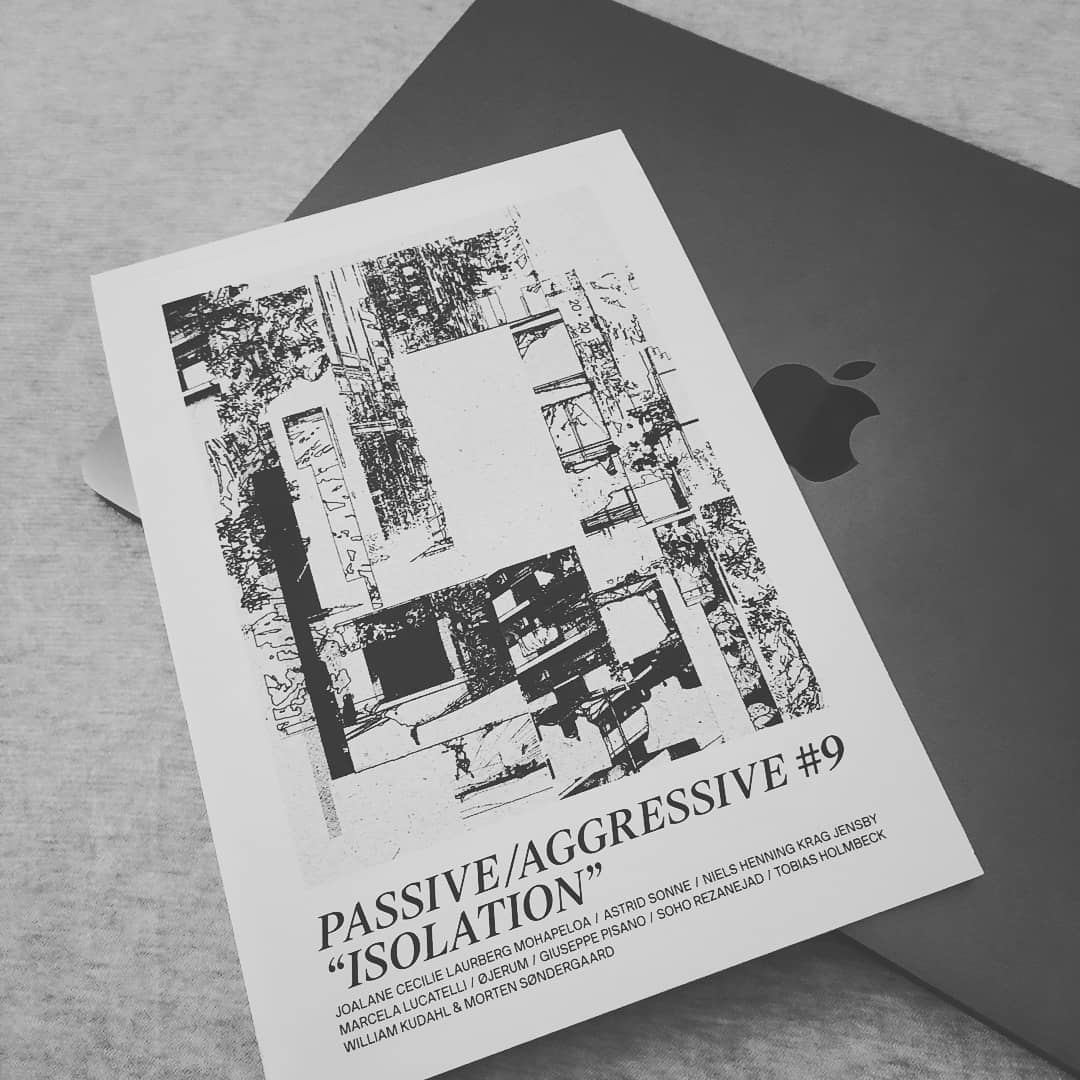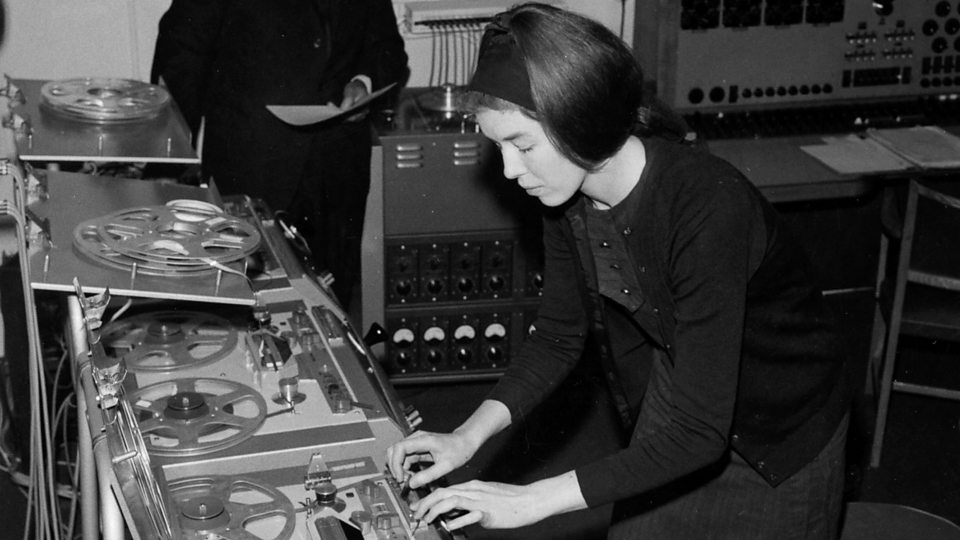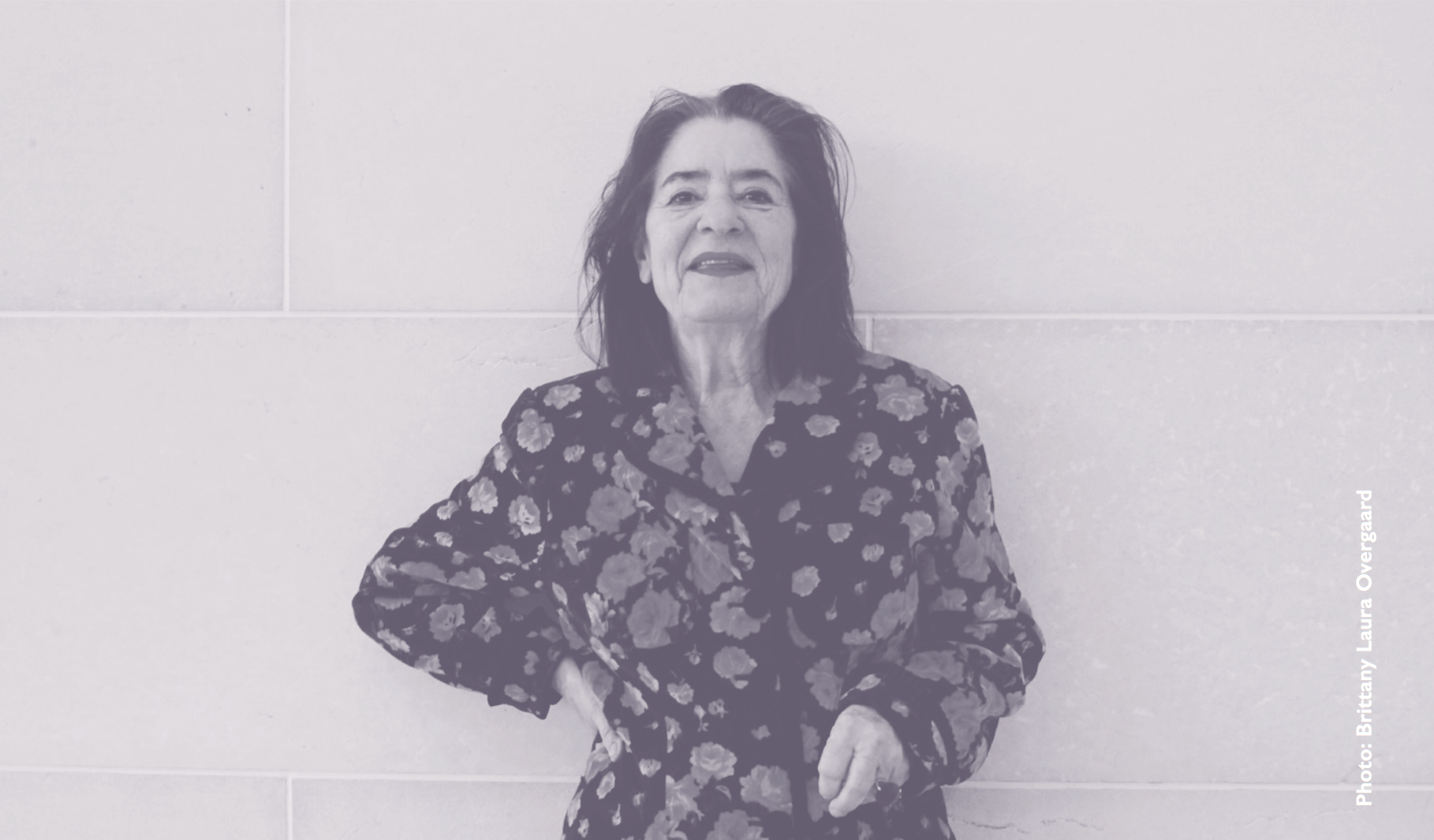“Equal temperament is the McDonald’s of tuning” – A conversation with Khyam Allami

Digital tools for music production are often perceived as the land of opportunity. Technology is shrouded in a narrative of democratization, progress, and artistic freedom. But there are several sides to that story. This is shown by the Iraqi-British multi-instrumentalist, composer and researcher Khyam Allami with his sharply conceived project ‘Apotome’, which was presented during the recent edition of Gong Tomorrow through an open workshop, a concert and an artist talk.
‘Apotome’ was created as a tool to help counter the cultural asymmetry embedded in modern music-making tools, which share a bias inherited from Western music theory and culture. With his horizon-expanding method, Khyam Allami point towards more liberated, creative, inclusive, and culturally balanced music-making processes.
In this conversation with journalist and PhD in Musicology Anders Reuter in Copenhagen frmo September 2021, Khyam Allami explores the subjects of tuning and the inherited biases of modern music technology. ‘Apotome’ was awarded the inaugural Isao Tomita Special Prize at Ars Electronica 2021.
The conversation is made possible and presented in collaboration with Gong Tomorrow and RMC – Rhythmic Music Conservatory. Transcription by Canadian pianist/composer Matt Choboter. Photos by Malke Folke Ivarsson.

Anders Reuter: I think I want to get started as quick as possible, but just to give you a quick introduction and let people know who you are.
Khyam Allami: Sure.
Anders Reuter: Do you want me to do it or shall you?
Khyam Allami: Yes, I think I can do it. My name is Khyam Allami. I’m a musician, a composer, a researcher, and I predominantly play oud, the Middle Eastern lute. I also play a bunch of other instruments. I have a varied interest in music from all genres and different cultures, and I’m a very big fan of electronic music and studio production as well. I’m in the middle of the last year of a PhD in composition – a practice based PhD at The Royal Birmingham Conservatory in the UK.
Anders Reuter: Perfect. I think we’re mainly here to hear about a program you made called Apotome and we’re going to talk a lot about that in depth and what that entails. To begin with, could you tell us a bit more about why you started working on your project with Apotome?
Khyam Allami: Yeah. So actually, there are two softwares. They both run in the web browser, but they’re interrelated. One is called Leimma and it’s a tool for creating and exploring different tuning systems. And the other one is called Apotome, and this is generative music environment for creating generative electronic music using those same tuning systems.
It’s not easy to give a quick answer as to why I started this project, but ultimately it comes out of a frustration. I started playing the oud very late in my life. I think I was maybe 23 or 24 years old. The oud is a fretless instrument very much like the cello or the violin that wherever you put your finger that will be the note or the sound you hear. And when I started studying this instrument and the musical cultures of the Middle East – and other cultures I was interested in such as the music of Azerbaijan, the music of India etc. – I started to hear melodies and music in a slightly different way. I wanted to be able to use the digital tools that I had grown up using. Having been a drummer in the past and worked in bands, I was used to using four tracks, studio equipment and then programming. Maybe you’ve heard of tools like Pro Tools or Cubase or Logic – Desktop Audio Workstations known as DAW’s? I started to become very frustrated because the music I was hearing in my mind and the kind of music I wanted to try and experiment with was in conflict. When I would start programming, the tools themselves would lead me in a different direction and I couldn’t really understand why until I started doing more and more research into this subject of tuning and tuning systems from different musical cultures. And then I realized that there was a restraint, because of the technology. And when I realized there was this restraint, I started searching for the tools to get outside of those confines. The tools were many, but they often felt very unintuitive, sometimes overly complex, and often with as many limitations as liberties that they afforded me. So I became very frustrated and I stopped working with computers and with electronic equipment, and I focused on my oud studies.
I put myself into a B.A. program studying ethnomusicology at the School of Oriental and African Studies in London, and I spent maybe about 10 years kind of immersed in that musical practice. During that time, I never stopped listening to music that I grew up listening to in London. So I was born in Damascus. We moved to London, but when I was nine I got into punk rock and a bunch of other stuff like electronic music etc., but I never stopped listening to my childhood music, and I always had a desire to explore those kinds of sonic terrains. It wasn’t until a few years ago I became so frustrated again that I wanted to find a solution, and so I started developing a couple of devices, but then realized that I should take a different approach. Then I started this Ph.D. and took it upon myself to create these tools in order to allow myself the creative freedom I wanted for my Ph.D. in composition. And the Ph.D. is focused on creating contemporary and experimental Arabic music. This entails using different compositional techniques, different instrumentations, but trying not to lose the sense of identity. While doing my research, I very often came across the idea that if you remove language from music, which is a key cultural identifier, then there are only a few other musical elements that actually, at least for me, help you localize where a music might be from. Those are obviously the rhythms, the tuning and the timbre of the instruments. And I realized that rhythm is very easy to manipulate in modern tools. Timbre is obviously incredibly easy to manipulate, but tuning wasn’t. What I wanted to do in my compositional research was try to create compositions that felt like Arabic music fields for me, but din’t necessarily sound like Arabic music sounds for other people, you know, in general. And so, yeah, that’s the long answer.
“Many different dialects and vocabularies have been faded out in favor of a certain linguistic style that has been chosen by a specific class.”
Anders Reuter: We’re here for long answers, (laughter..). It struck me when I was looking into your programs and reading up on your work that it sort of intersects two black boxes of music today, where we are taking some things for granted when we listen to them and we’re taking things for granted that we don’t know about. One is tuning. We sort of think that that there’s just one kind of tuning in the so-called West. The other black box is how electronic music is made – how digital music is made in which we can’t really relate to digitally synthesized music the same way as traditional instruments, because it’s like magic to ordinary people listening to popular music. It’s difficult to imagine how the sound was produced. I think you are sort of intersecting these two black boxes. So if we could sort of open at least one of them, which is the tuning thing. Can you say a bit about what tuning is, because, to be honest, I’m a trained musicology, and I did what I was supposed to do within the groundwork of music theory, but this was actually a reminder, a wakeup call for me, to consider how I don’t consider what kind of tuning I’m working with. So perhaps some words about what tuning is and what kinds of tunings there are and stuff like that?

Khyam Allami: The simple way to explain it is that a tuning is the choice that’s made for what tones, what pitches an instrument can make when you play it. So for example, if I were to give you each a set of bamboo pipes and say, make me an instrument. You’re going to have to make a decision based on that material and what lengths you want each pipe to be, which would then create a tuning system. So that decision making process might be systematic. It might be mathematical. It might be scientific. It could be completely intuitive. It could be totally random. But ultimately, you’re making that decision. And by making that decision, you’re creating specific pitches. And that’s your tuning system. Then you can choose whether you want to play all of them, whether you want to use subsets of them, or whether you want to do something else. That process of creating pitches is a process that has been undergone by musical cultures throughout history, throughout the world, and different cultures have decided on different kinds of tunings because of many reasons – aesthetics, science, the materials themselves.
So very often the actual material an instrument is made from can affect the way that it sounds. The same with the way that the instrument looks. If I was to give you, rather than pipes, a bunch of bars of wood, for example, that you would strike with another piece of wood. You’d have to make a decision whether you want to keep them all the same length, making the same sound, or if you want to change their lengths so that they have different pitches. And based on that and the way that it looks and the way that it sounds, you might make certain decisions. So that’s ultimately what tuning is. The general answer that you will get if you search about this online is – “tuning was discovered by Pythagoras and it’s the division of the string and the harmonic series and the ratios of” – which is for me, a very convoluted way of explaining an essentially very human process tied to aesthetics, choice, and even to physics of sound to an extent.
You asked me to mention something about different tunings as well. So, yeah, ultimately the predominant tuning that is used in the world today is this tuning system called equal temperament. This is a tuning system that was developed in Central Europe, specifically within the realm of Western art music. Western classical music had the purpose of trying to resolve some compositional problems for a specific class of composers. It was funded by a specific class in society to have more creative freedom for the musical genre that they were working within and that slowly became a standard. And that system, 12-tone equal temperament, is inherited in all of the digital tools that we have at our disposal, because of its links to Western music theory. And therefore, it’s become the predominant tuning system and musical system that is available across the world in the majority of musical instruments.
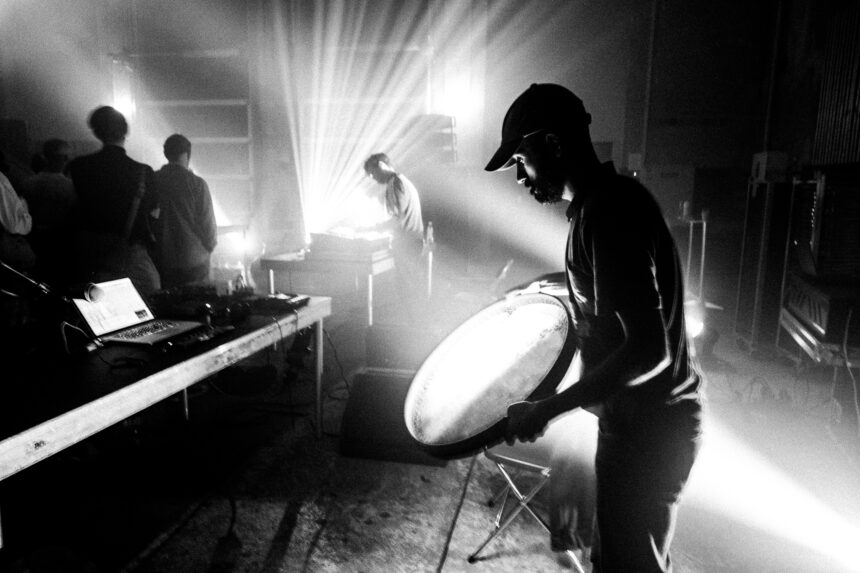
Anders Reuter: I’ve been trying to come up with the perfect metaphor for what you’re doing or what you’re making us aware of in regards to being used to this equal temperament in the so-called West. For instance, we have 600 muscles in our body and we’re just using one hundred of them. Or just using one color palette instead of all colors. I think that’s slightly better as a metaphor.
Khyam Allami: Also, you can say the same about language. You can say that we’re all speaking the same language or the same accent or the same dialect as opposed to variant dialects. Or we’re all using the same spices or lack of spices in our foods. There are many.
Anders Reuter: I think that that’s why your project works as a metaphor on a grander level, where it makes us aware of what we are bringing, what we’re not noticing. We’re not noticing our own filter or the lens through which we see or hear the world. So as a metaphor, I think, to make awareness about what equal temperament is – that there’s a particular way that we do music in this part of the world. But that’s not the end goal. That’s not the only thing and there are a lot of different ways to do stuff, and that broadens the horizon for everyone.
Khyam Allami: That’s true. But I also think it’s worth considering that it’s not as simple as West versus the rest of the world scenario. It’s not so black and white, even within Europe. This is why I mentioned earlier about this being an issue related to a specific musical class and a specific societal class. In Europe, the music that is even present up until today has many different tonalities and shades of these sonic colors. Think of something like flamenco from Spain; fado from Portugal; Nordic Scandinavian folk songs; the bagpipe traditions from Britannia in France; Neapolitan singing.
It’s just endless. You know, every culture has its own color, just like every country has its own language or a variety of languages and in all the variety of dialects etc. In a way, the language metaphor is probably quite relevant here because you can think of it in the same way. How language has been standardized. Many different dialects and vocabularies have been faded out in favor of a certain linguistic style that has been chosen by a specific class. I think of like whatever Italian was after the unification of Italy. A very specific type of literary Italian was used as the foundation for the Italian language. In reality, when you go out in Italy and travel in the country, the dialects are wildly different. And you know, the Sicilians don’t barely speak the same language as the Romans. It’s really crazy. Ultimately, it’s really about cultural identity rather than these geographical regions that we’ve come to associate with political power.
“We’ve come to believe that equal temperament is embedded within Western instruments and Western music, but it really never was.”
Anders Reuter: The link between technology and the music we make has a very long historical line. And then, as you say, the equal temperament is partly based on technological advancements and particular historical events from hundreds of years ago. And this is a big question about how technology has shaped music throughout history. How do you see the link between technological innovation and musical innovation from a historical perspective?
Khyam Allami: I think it’s actually really fascinating, because equal temperament is ultimately a theoretical construct in that It wasn’t ever practiced with 100 percent precision. For example, we have come to believe that the piano is a symbol of equal temperament, but in reality, the piano is not tuned to 100 percent equal temperament. Maybe today they are, because of the technology of the instrument design and because the tuning capabilities have changed. But even 50 years ago the piano wasn’t tuned to equal temperament. There’s an issue of harmonicity in the way that the strings resonate, and so very often the upper octaves of a piano would be tuned slightly higher or slightly lower because of the tension of the strings. And then the lower octave would be also different. And if you listen to Billie Holiday, her backing band is a piano and a clarinet. Instruments that are associated with equal temperament. But when you hear those recordings, there are shades – like her singing style has a very specific tonality, a very specific intonation. You can think of it as an accent. It’s Billie Holiday’s sound. The same with Stevie Wonder.
We’ve come to believe that equal temperament is embedded within Western instruments and Western music, but it really never was. Singers tend towards more pure intervals. They sing into chords. The same with string players, because they don’t have frets. Ultimately, orchestral instruments try to stick to this equal temperament, because of the way some of the instruments are designed, etc., but most of them are reasonably flexible. It wasn’t until the proliferation of digital technologies that we actually started to hear hundred percent precise, equal temperament. So the theory, the idealized theory, didn’t actually become pure reality until we had digital synthesizers. If you compare a jazz band that uses digital keyboards – like the Nord, you know, sometimes you see jazz bands with these red keyboards – these are tuned perfectly, because they’re digital instruments. Compare recordings from the 90s or 2000s to a jazz recording from the 70s, 60s, 50s and it’s a completely different feeling. So, I find this shift incredibly fascinating.
The technology was actually supposed to emancipate everybody because it has the capabilities to change from one tuning system to another and you could resolve all the the compositional problems that theorists tried to resolve by creating equal temperament. You can actually resolve those just using the digital tools by having the ability to switch between tuning systems on the fly. But that technology, which was supposed to emancipate us, actually ended up being a tighter straitjacket thean it was supposed to be. And that has to do with the development of technologies, the economic market, economic decisions made by manufacturers, for the ease and the convenience of having everything made to the same system. This is so that musicians don’t have to think about it, they just sit down together and it’s supposed to all be in tune, when in fact it’s kind of all out, but all out of tune together (laughter…).

Anders Reuter: So coming back to your project. Is it for music making itself or is it more like an educational tool that teaches you something that reminds us that there is this broad palette of different tunings? Or is it both?
Khyam Allami: I think it’s both, and maybe more. I think it’s worth highlighting that there have been many tools that have been created throughout the last 20 to 30 years or so, that try to resolve these problems. And there are many musicians and composers who are invested in these problems and in these issues and these subjects. But I think the fact that the tools we have created – and I say we because I designed them and worked with a creative studio called Counterpoint, run by Samuel Diggins and Tero Parviainen, and they were the ones who coded and created the visual design for this based on my concepts and my work with them – the tools were created ultimately for creative exploration. It’s a great tool for education, and I think also it’s a great tool for research, whether it be comparative research or analytical research in terms of music, in terms of tonality systems. As it starts to grow, and the repository of tuning systems becomes richer I think it’s going to be invaluable for being able to ask questions and analyze this information both qualitatively and quantitatively. So, I think it has these three prongs.
Anders Reuter: One thing I’ve been working on in my own research is how electronic music is based on a different kind of playfulness or improvisation which makes up things instead of having this like contemplative, planned out, goal oriented way of working. And in this playfulness you’ve talked about something called repressed possibilities. Can you tell us a bit what you mean by that?
Khyam Allami: Ultimately, I think that musical cultures from around the world have not been afforded the same possibilities as Western Anglo-European musical cultures have, because of the limitations of the technologies. Specifically, because of this issue of tuning. The issue of tuning is ultimately like the equal division of pitch versus the unequal division of pitch. And it’s the same for rhythm. If you think about drum machines, when they were first made, they had a very specific grid. Everything was 16 beats long. You had these, you know, fixed equal divisions of time in terms of rhythm as well. This has somehow been resolved with the technologies and, you now can. But it’s still not as intuitive as it should be, in my opinion. So what I feel has been repressed are the possibilities of exploration, the possibilities of creative experimentation, vis-á-vis what was possible for Anglo-European Western musicians.
I think it’s important here to also think of a historical context. That modern Western music in the 20th century – so modern Anglo-European music in the 20th century – developed based on a reaction against the tonalities of romantic and classical music. 19th century music. And the reaction was mostly against the tonality. This is where we had, you know, the second Viennese school and some of the Russian composers. We’re talking Shostakovich, Henry Cowell, obviously Schoenberg, Webern, etc., who were creating serialism. Who created these systems of developing a new musical language that broke the rules of the modality and the tonality of the past. And while that was developing, technology started to develop. Then we have computer music, synthesis and musique concrète, Pierre Schaefer etc. And so the technologies then started leaning towards the idea of exploring sound as opposed to exploring pitch. And you can see it all – at least I see it this way – as a chain of reactionary events where you know, you had a series of people trying to break the rules of what was happening before. And I don’t think other musical cultures have had the possibility to break their own rules. And this is why I use the word repressed because I feel like those possibilities have been repressed, because the technology never allowed for that. Or at least it did, but then even that possibility was repressed. So that’s where ultimately that comes from.
Anders Reuter: I like that. “Not being allowed to break your own rules”. Well, I don’t like it, but you know what I mean. Also, because as you said earlier, it’s very much about convenience. Electronic music and electronics in general, and our contemporary society is about convenience.
Khyam Allami: I like to say equal temperament is the McDonald’s of tuning, because that’s ultimately what it is. It’s fast food. It doesn’t really have any nutritional value. It doesn’t really have much flavour. It’s just easy and quick.
Anders Reuter: McTune.
Khyam Allami: (laughter..) the McTuning. It is McTuning. (laughter…)
Anders Reuter: I like that. And you also relate this into the Black Lives Matter movement?
Khyam Allami: Not necessarily. I don’t see a direct relationship there at all, and I don’t think I’ve ever said that as far as my memory goes. But, I have mentioned that I was very much inspired by the Black Lives Matter movement. Inspired by the sense of agency. The sense of community, the sense of using information and the exchange and transfer of knowledge in order to better serve the day to day lives. Unfortunately, the Black Lives Matter movement and everything that’s around it, is really a life-or-death situation. Tuning is not! So I think we have to be very clear about that. But I do find that the agency, the strength and the willingness to tirelessly work for something incredibly inspiring.
“Philip Ewell, who’s another researcher who spoke about these subjects recently, calls this “the white racial frame”. And I find this to be an excellent metaphor and representation for this because unfortunately, supremacy is at the heart of these ideas.”
Anders Reuter: Maybe I’ve been reading too much into your work. And also because I re-read a researcher called Robin James. She’s a philosopher of popular music, who’s written about how our conceptions of sound today shape the notions of the social world and in ways that support… and I quote her… “white supremacist capitalist patriarchy”, which is a tall order because at the same time, some might think that music is, you know, innocent and pure and coming from an honest place with good intentions. But at the same time, what Robin James is saying is that if we stick to this perspective – the way that music is produced now – it is to some extent based on what she calls a “white supremacist capitalist patriarchy”. Do you have any thoughts on that?
Khyam Allami: Absolutely. Philip Ewell, who’s another researcher who spoke about these subjects recently, also calls this “the white racial frame”. And I find this to be an excellent metaphor and representation for this because unfortunately, supremacy is at the heart of these ideas. But it’s so deep in the roots that it’s very hard for us to see. Nobody’s going to buy a new synthesizer and think of this synthesizer as supremacist or not. But actually, the core principles upon which many of these tools are designed are based on supremacy. And that supremacy which I’m talking about is the supremacy of Western art music. The supremacy of Western culture. And from the research that I’ve been doing, this also goes back to the way that music history is represented.
If you search about micro tonality or tuning in internet literature, more likely than not, the first thing you’re going to see is a reference to Pythagoras, and that it was Pythagoras that discovered this. And it was the Pythagoreans that developed it. And it was thanks to the Greeks that we have all this wonderful knowledge about tuning, about sonics, and the physics of sound. But Pythagoras’ own biographer, Iamblichus – who wrote about a few hundred years after Pythagoras, but based on what he knew at the time – says that Pythagoras went to Egypt to study. And then from Egypt, was taken captive and went to Chaldia, which is Modern-Day Iraq (Mesopotamia). He studied there in total for about twenty two years maybe more, and returned to his little island of Samos when he was fifty two years old. That’s when he founded his school, the Pythagorean school. Those same sources from that early period – which is the closest to Pythagoras that has survived until now – also discuss the fact that Pythagoras was involved in the mystery schools of Egypt and Chaldia. So, we’re talking about religious mysticism and religious practices, and it’s very clear that Pythagoras didn’t discover anything. He learned these things. The knowledge was transferred and then he developed it. I’m not trying to discredit him, but he is in himself, anyways, a mythical figure, right?
So then, I actually was doing some other research. I found that there is written references and archeological evidence of the same tuning system that Pythagoras discovered in China. This, in the form of lithophones, which are tuned stones or rocks from around 1500 B.C, if I’m not mistaken. A thousand years before Pythagoras, the Chinese were tuning rocks to the same mathematical principles that Pythagoras supposedly discovered. In every single book about tuning and microtonality the Chinese are mentioned in passing. You might get a couple of paragraphs, a page if you’re lucky!
Going back even further, in the 50s and 60s, a clay tablet was discovered in Mesopotamia. It’s called the tuning tablet, because it describes a method for tuning the ancient Mesopotamian harp. It’s the nine stringed harp. Only one exists now, which is at the British Museum. And this tuning text doesn’t give precise details of what the tuning should be in terms of ratios or string lengths or anything like that. But it does tell you how to tune your instrument and how to cycle through seven different modes. Which are ultimately the same seven modes that we are told today are the Pythagorean ancient Greek modes. And that’s from the old Babylonian period, which is dated any time between 1500 to 2500 B.C. So that’s about one thousand five hundred years older than Pythagoras. These things you never hear about in this discussion.
And what I’ve come to realize is that we don’t hear about them because there is this perpetuation of this 18th and 19th century Austro-Germanic English myth that civilization started with the Greeks. This idea that the Greeks are the ones who are responsible for bringing arts, sciences, politics and philosophy to the world. And some of those same researchers claim that philosophy and the arts and the sciences could not have existed anywhere east of Greece because the climate is too hot. And I’m not bullshitting you. (Laughter…) So it’s really wild.
“I found that there is written references and archeological evidence of the same tuning system that Pythagoras discovered in China. This, in the form of lithophones, which are tuned stones or rocks from around 1500 B.C. A thousand years before the Greeks, the Chinese were tuning rocks to the same mathematical principles that Pythagoras supposedly discovered. In every single book about tuning and microtonality the Chinese are mentioned in passing.”
When you realize that there’s that history and that ultimately these perspectives have been perpetuated. Through the fundamentals of musical concepts for instance. That’s not to mention the supremacy of Western classical music in itself and the ideas related to the orchestra and how Western music education was imposed on musical cultures through colonization throughout the years. It’s not for no reason that so many amazing Western classical musicians today – orchestral musicians – are from previously colonized countries. And it’s not for no reason that the piano became one of the most predominant instruments across the world. Exported and imposed on children, you know, (laughter…) forced to play and forced to learn. And obviously, there’s been a pushback but that’s for me where the supremacy lies, and that’s for me where it comes from. That’s its trail. But obviously, there’s been pushback and there are many other cultures that have developed and flourished through those periods. Indian classical music really developed in the Mughal period and, you know, right up through to the early 20th century. But again, we come back to the question of technology and modern tools. Once those tools became consumer tools, which were easy to manufacture, cheap, easy to distribute, they proliferated the entire world and therefore imposed their own perspective on the entire world as well. And that’s ultimately where we are now. So that white racial phrase – I can’t remember the exact words of Robin James – that patriarchal western capitalist ideology unfortunately is the water that was used to grow the seeds. So in a way, everything is contaminated. We need to figure that out.
Anders Reuter: Yeah, as you say, it’s really spreading. It’s getting around because digital technology is easy to distribute, and I think everyone can download Ableton Live or…
Khyam Allami: Just the free app on the iPhone…
Anders Reuter: Let’s be honest that most of these programs, the DAW’s – digital audio workstations – are now downloaded illegally and have been for some 10 or 20 years. But at the same time, isn’t there an upside to this globalization? A sort of democratization that a 15-year old in Kathmandu or Lima or wherever, can sit down without any funds, without any training and start composing music?
Khyam Allami: Of course. But I think the problem here is to do with choice. What could be an interesting comparison? So obviously, people are going to get excited about things that they don’t know. But removing the sense of agency and removing the choice that somebody might have in order to explore something else, for me is a problem. So, I don’t think it’s democratic. I think that’s actually a bullshit word. And I’m sorry to have to use that word and to be so strong about it. It reminds me of the same discourse that we were hearing around the Iraq War and post 9-11. America’s going to plant democracy around the world. The allied powers are here because they want to spread democracy. And it’s the same vein in which these terms are used with regards to music technology. And I just find it ridiculous because it’s not democratic. Democracy needs to be about choice. Choice needs to be based on knowledge. And if that choice doesn’t exist then there is no democracy. For me it’s clear that it’s not democratic. I want to be very clear though. I don’t think that musicians from other cultures should use these tools only to play traditional music. I don’t think that this is about putting digital possibilities into the museum straitjackets of the Orientalist perspectives. “You have a beautiful culture, you need to preserve and safeguard it, and this needs to be respected and held on to”. I think people need to have the choice to break their own rules. So they develop ideas in their own image based on their own culture, based on whatever they have in their minds.
Anders Reuter: Yeah, because the downside is totalization that everyone, no matter where they are, are making the same music because they’re using the same tools, I guess.
Khyam Allami: Exactly.
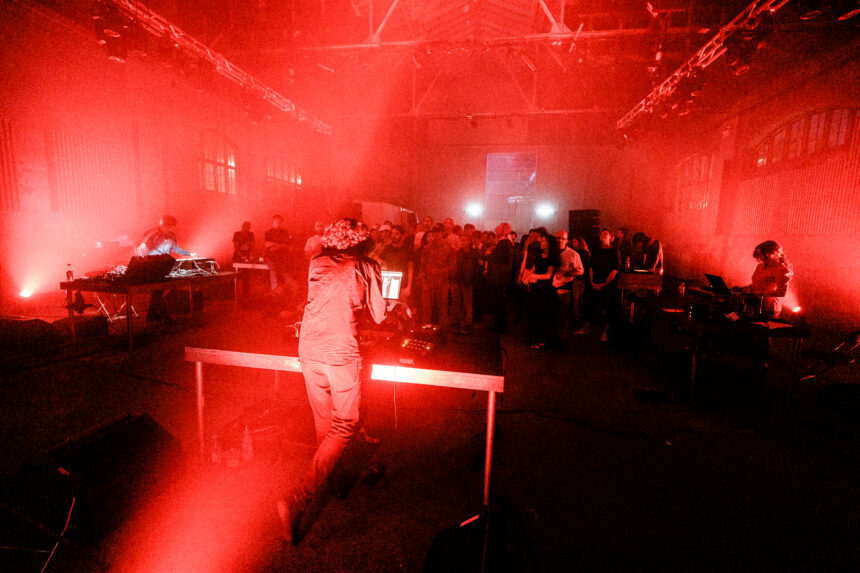
Anders Reuter: From some sort of the capitalist supply and demand perspective, wouldn’t you imagine new tunings being accommodated if there was the demand? That the people who are producing these various softwares would accommodate them if they were there. Then it must mean that there’s not a demand for it?
Khyam Allami: I’ve heard this argument many times and I think it’s quite interesting for a couple of reasons. Firstly, the main one is that modern music technologies started as electric instruments. In the late 80s, a digital language was developed in order to allow those instruments to communicate with each other. This language is called “MIDI Musical Instrument Digital Interface”. This language was designed out of an economic concern. It was designed by Dave Smith of Dave Smith Instruments and Ikutaro Kakehashi from Roland (a Japanese company). They saw a potential for the mass adoption of these musical technologies, and they were concerned that the market wouldn’t be able to grow if those individual items were each of them their own little world. There wasn’t a way for them to communicate with each other and ultimately in the early days that communication meant syncing. So, to be able to sync the time between a drum machine and an LFO on a synthesizer or LFO from one synthesizer and an LFO on another synthesizer, for instance – came in the late 80s.
“But seriously, when did the market define the potential for creative expression? So many musical instruments were made with the sole intent of emancipating musicians or creating new forms or new ideas. You know, even going back to the theremin, the ondes martenot or these early electric instruments. The synthesizers; Bob Moog synthesizers; Don Buchla synthesizers; the drum machines made by Roland and whoever else. All of these instruments were made with the idea of advancing musical expression. Advancing musical culture and allowing for experimentalism and experimentation.”
Due to some interest and research by a few composers, they convinced Dave Smith to introduce something called “MIDI Tuning Standard”, which was the ability to allow for different tunings in these new musical instruments. This used the language that had become the de-facto standard for how these instruments communicate with each other and how they are developed within themselves. And MIDI Tuning Standard was ratified in the Code of MIDI as a language in 1991. In the late 80s Wendy Carlos – who some of you might know from Switched-On Bach … She was incredible – had spent a fortune, I’m talking probably near on a quarter of a million dollars at the time developing computer systems that could allow her to explore these different tuning capabilities after obviously having had a lot of experience using analog electric equipment. And she was speaking very, very excitedly about these new frontiers of digital music equipment, specifically because they would emancipate the tuning standards and would allow for all these different types of expression and exploration, etc.
In 1991 MIDI Tuning Standard is ratified, making it incredibly easy, and it’s a foolproof/future proof code system in terms of frequencies. It works in a perfect way for any kind of musical culture, for any kind of experimental form. You can create a tuning system; play it; have those notes resonate and resound; change the tuning system without tuning without changing the tuning of the previous notes; and play a new one whilst maintaining the old ones. It’s absolutely wonderful, perfect, and it was used in a few synthesizers at the time. Specifically, the first commercially manufactured and commercially available digital FM synthesizer, which was the Yamaha DX7. It was used in many of Dave Smith’s instruments. It was used by Yamaha. I can’t remember many other companies. But then it just kind of died out. The manufacturers stop including it, and they stopped allowing that particular type of code. Even though it’s still within midi, they stopped allowing it or accommodating it to be transferred from one device to another. So you couldn’t even have like a central controller and change the tuning of those other synthesizers. It just wouldn’t accept that information, it wouldn’t accept the data. So, what was an economic concern developed into an emancipating project in order to allow all of these different pilots of exploration. And ultimately, the door was very firmly shut. And so today, people or instrument manufacturers – whom I’ve spoken to – have told me the same thing. “Well, there isn’t a market for this, right”?
But seriously, when did the market define the potential for creative expression? So many musical instruments were made with the sole intent of emancipating musicians or creating new forms or new ideas. You know, even going back to the theremin, the ondes martenot or these early electric instruments. The synthesizers; Bob Moog synthesizers; Don Buchla synthesizers; the drum machines made by Roland and whoever else. All of these instruments were made with the idea of advancing musical expression. Advancing musical culture and allowing for experimentalism and experimentation. So they weren’t thinking 100 percent about the markets and economic viability, even though obviously they needed to. But that never stopped them from being innovative. From trying to spearhead innovation in any way. So for somebody today to turn around and say “if there was a market for tuning I’d include it”, just makes no sense to me. One, because that means that they are literally repressing innovation. Two, the resolution for this is really not complicated. Allow MTS in your midi code. That’s it.
After we launched Apotome in Lima in January 2021, Aphex Twin – who has been a proponent of non-tempered tunings for many, many years, has been collaborating for the last four years with a new English company called Odd Sound – released a plugin that would allow the central control of tuning across all kinds of different devices. Hardware devices, because I guess this was also one of Aphex Twin’s main concerns. The technology has changed and there’s so many things that are obsolete so you need to find a way to be able to control as many of them in as simple an interface as you can. And they called it MTS ESP because it’s based on MTS. This element of midi language – which was ratified in 1991 – was released this year, 30 years after, only because Aphex Twin agreed to help them promote it, because he’s such a huge name. So, the fact that the solution – from a synth or DAW manufacturer’s perspective – is so easy makes this argument of market or no market, in my view, completely redundant.
Anders Reuter: What happened to MTS? why did it die out in the 90s?
Khyam Allami: I don’t know. I think it’s funny because it doesn’t even take up that much code. We’re not talking about like RAM chips that can only hold six kilobytes of information or whatever. We’re talking about, you know, basic, simple data. It’s not heavy in terms of file size or transfer. So, my explanation would be that they are just not interested. And so if there’s no need for something which they view as extraneous code, then they just don’t include. Maybe they didn’t know that all these other tunings exist. Maybe they don’t think it’s necessary because the convenience of equal temperament is, you know, perpetuated across the world. I don’t know. I have no idea whatsoever, because it really isn’t such a big deal. What is a big deal is how you would represent that information. But even if they don’t want to go into the musicological research – understanding how to represent tuning data to satisfy the needs of musical cultures across the world – at the very least they could just allow for that functionality, which they don’t. So I can’t think of any other reason for it. Apart from that, they’re not interested or they don’t know about it.
Anders Reuter: That is interesting and kind of weird. It’s almost a conspiracy. (laughter…)
Khyam Allami: I wouldn’t go that far. We have enough of those as it is. But I’ll give you an example that is going to blow your mind if you don’t know it already. You all heard of autotune, right? Auto-Tune allows for non equal tempered tunings. But you can only use the presets that they have put in there, you cannot use your own custom data and the presets that they have in it are completely tokenistic. “Arabic 1” is one of them. The Arab world has at least four historical – 10th century onwards – tuning systems. If you want to push it a little bit more, maybe up to eight. What’s Arabic 1? There is a “Maqam” system that has 53-55 different Maqams up to 100 different branches of those Maqams. What does Arabic 1 mean if it’s not just some tokenistic thing? And then the way it maps, the way that it works, the way its visually represented is a disaster. So even autotune, it’s a plugin software created by the company that was trying to make again another studio production technique easier and cleaner. Trying to perfect tuning of ultimately voices or instruments that were recorded. It’s a company that’s obsessed with the idea of tuning becoming perfect or as close to perfect as can be. Even they included these non-equal tempered possibilities, but tokenistic and in a way that’s completely unusable.
So, the technology exists. What doesn’t exist is the understanding. It doesn’t exist as the desire to actually reach out and make something like that possible. And ultimately, what we have now is the McDonalds of tuning being used all over the world for all kinds of music. And just because some kid in Morocco is rapping amazir, everybody thinks that music making is democratized. But he’s rapping in a dialect that comes from German church music, ultimately. Something’s wrong here!

Read more about Khyam Allami’s Apotome at his website: khyamallami.com – This transscription is brought to you by Anders Reuter, Matt Choboter and the Rhythmic Music Conservatory in Copenhagen.
